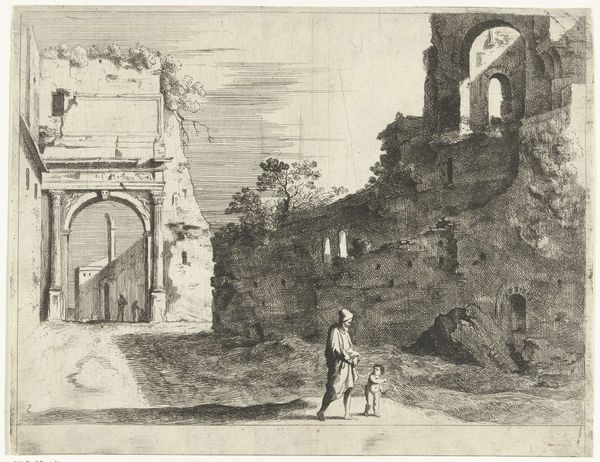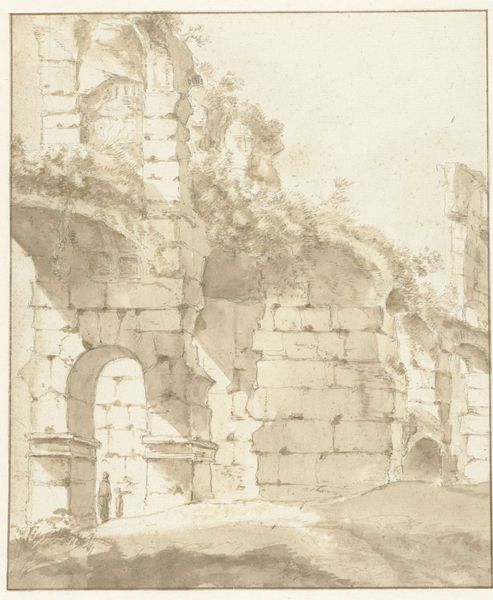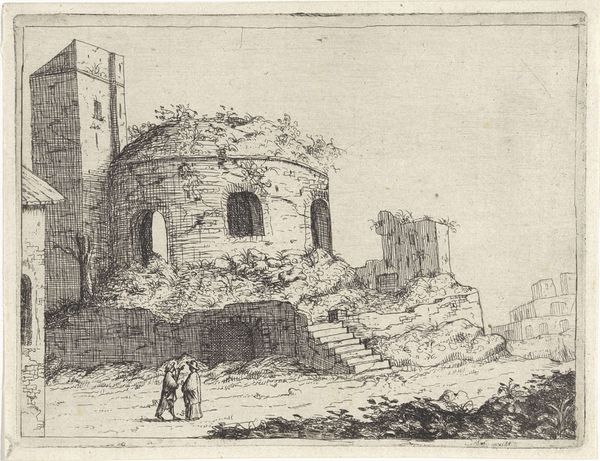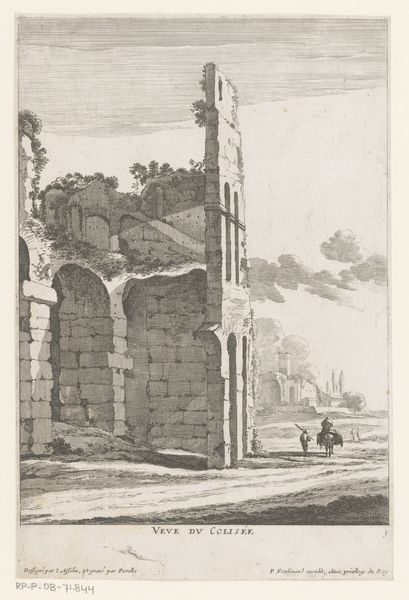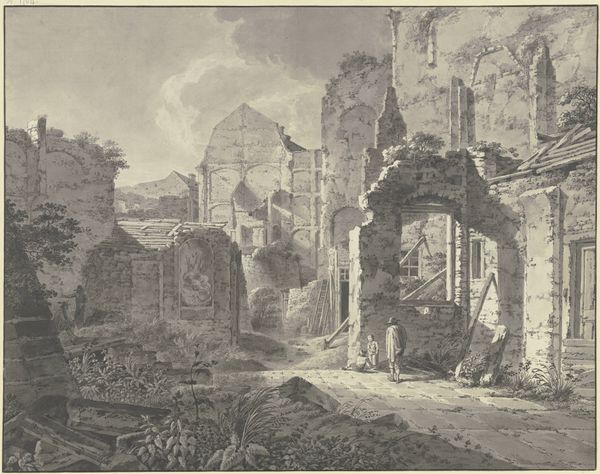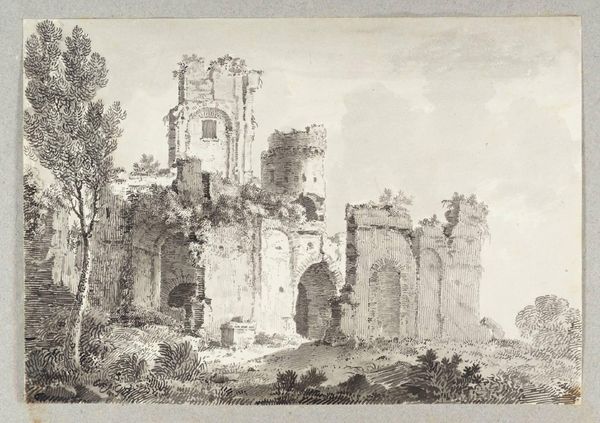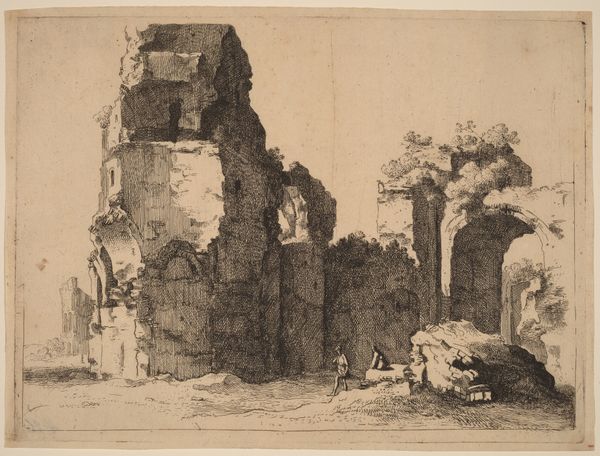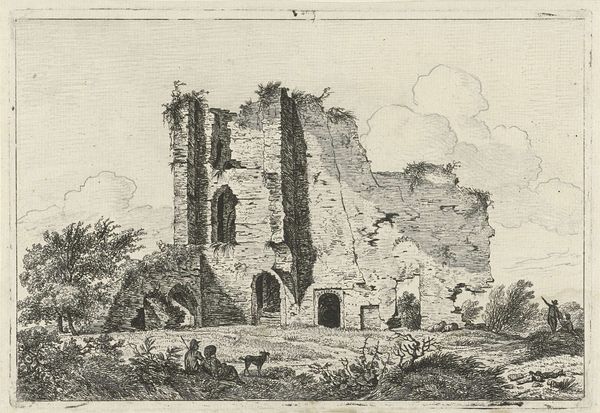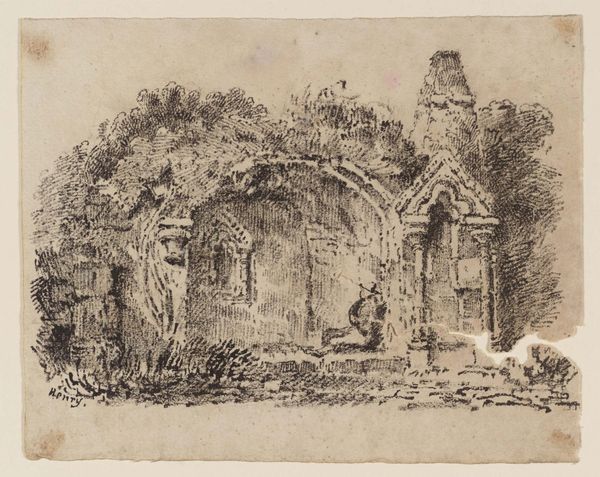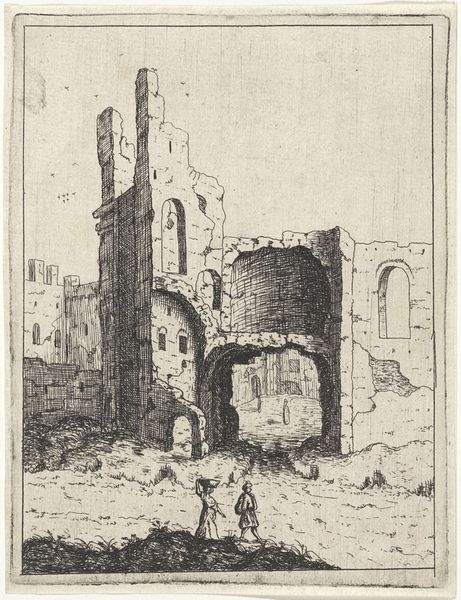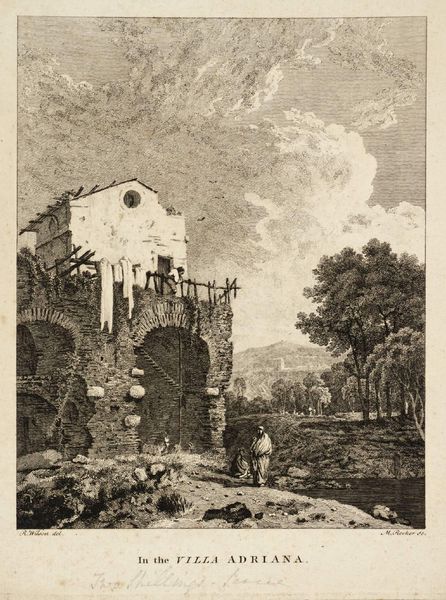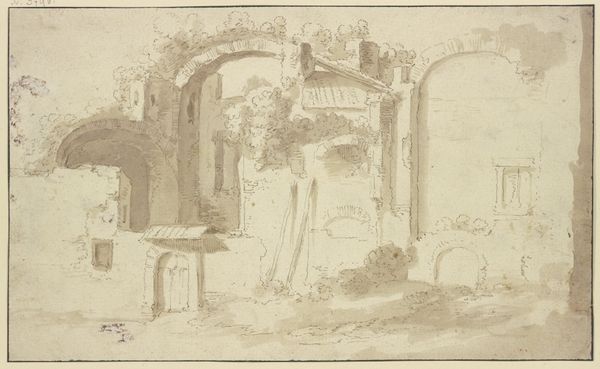
drawing, watercolor, architecture
#
drawing
#
landscape
#
romanesque
#
watercolor
#
cityscape
#
history-painting
#
watercolor
#
architecture
Dimensions: height 693 mm, width 515 mm
Copyright: Rijks Museum: Open Domain
Editor: This drawing, "The Anointing of David among the Ruins of the Roman Forum" from 1642, by Bartholomeus Breenbergh, is rendered in watercolor. I’m immediately struck by the contrast – it’s both a biblical scene and a cityscape study of ruins. What stands out to you when you look at it? Curator: The power here, I think, lies in that exact juxtaposition. Breenbergh positions a key moment of Hebrew history – the anointing of David – within the monumental ruins of Rome. Consider the symbolism: the crumbling Roman Forum representing a fallen empire, and within its remains, the nascent seeds of a new kingdom, a new order, are being planted. What does this contrast evoke for you? Editor: I guess it suggests a cycle of power, doesn’t it? One rising from the ashes of another. The ruins are so prevalent; are they the main subject, even though the title references David? Curator: It depends on how you read the symbolic weight. The figures enacting the anointing ritual are small, almost swallowed by the scale of the architecture, true. But isn’t that part of the point? David's future kingship, though significant, begins humbly amidst the grandeur and decay of the past. It is an interplay between the grandeur and its transformation, or subversion. Does that make sense? Editor: Absolutely. It is the sense of cyclical patterns of human achievement – of a "before and after." Were viewers at the time aware of that symbolism? Curator: Highly likely, yes. The ruined classical world was a constant visual and intellectual presence for artists and their patrons during the Renaissance and Baroque periods. These ruins carried layers of meaning: the transience of power, the triumph of Christianity over paganism, and even a nostalgic yearning for a lost golden age. The images create dialogue across the centuries. Editor: So, by combining these elements, Breenbergh is making a statement about the enduring nature of faith and leadership, even as empires crumble? Curator: Precisely. He uses the visual language of ruins to speak to themes of renewal, succession, and the cyclical nature of history, through carefully planned symbolic pairings. This is what allows one image to tell many stories simultaneously. Editor: This has totally changed how I see it – I was too focused on just the surface depiction! Thanks! Curator: My pleasure. Art reveals its complexities and nuances the more closely you analyze the rich and complicated set of visual cues the artist is using. It then reflects back our cultural memory.
Comments
No comments
Be the first to comment and join the conversation on the ultimate creative platform.
